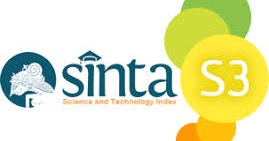Effect of LAI Antipsychotics on Relapse Frequency and Adverse Drug Events of Schizophrenia Patients
Introduction: Non-adherence to oral antipsychotic medication is common in schizophrenia patients, and it is very likely to lead to recurrence. Whereas the frequency of recurrence in schizophrenia is associated with poorer long-term outcomes and disease progression. The use of long-acting injectable (LAI) antipsychotics has become a favorable approach in the management of schizophrenia, especially to reduce relapse rates and minimize treatment-related side effects. The aim of this study was to evaluate the effect of using LAI antipsychotics, specifically fluphenazine decanoate, on the relapse rate of schizophrenia patients as well as to assess the potential associated side effects. Methods: This study was a quantitative analytical study design with a retrospective cohort approach involving 1102 schizophrenia patients in RSJ Prof. Dr. Soerojo Magelang who received LAI therapy (fluphenazine decanoate) in various administration frequencies and time intervals. Data on relapse frequency and adverse drug events were obtained from medical records and adverse drug events yellow forms. The bivariate test used was a Wilcoxon signed rank test. Results: The results showed that 77.86% of respondents received LAI with an administration interval ≥ 180 days, and 92% received LAI with low administration frequency (1–5 times). There was a significant decrease between the frequency of relapse in schizophrenia patients and the incidence of drug side effects before and after the administration of antipsychotic LAI. Conclusions: In this study, it was found that the use of antipsychotic LAI (fluphenazine decanoate) can significantly reduce the frequency of relapse and the incidence of adverse drug events in schizophrenia patients.
Copyright (c) 2025 Sabar Siregar, Giyanto, Ery Surya Sevriana, Rayi Citra Ayu Pangestuti, Wahyu Ratna Dewi

This work is licensed under a Creative Commons Attribution-ShareAlike 4.0 International License.
1. Copyright of this journal is possession of the Author, by the knowledge of the Editorial Board and Journal Manager, while the moral right of the publication belongs to the author.
2. The journal allows the author(s) to retain publishing rights without restrictions.
3. The articles are published under a Creative Commons Attribution Share-Alike (CC BY-SA) license. Many research funding bodies prefer the CC BY-SA license because it allows for maximum dissemination and re-use of open access materials. Users are free to share (copy, distribute, and transmit) and remix (adapt) the contribution under this license, including for commercial purposes, as long as they attribute the contribution in the manner specified by the author or licensor.

























